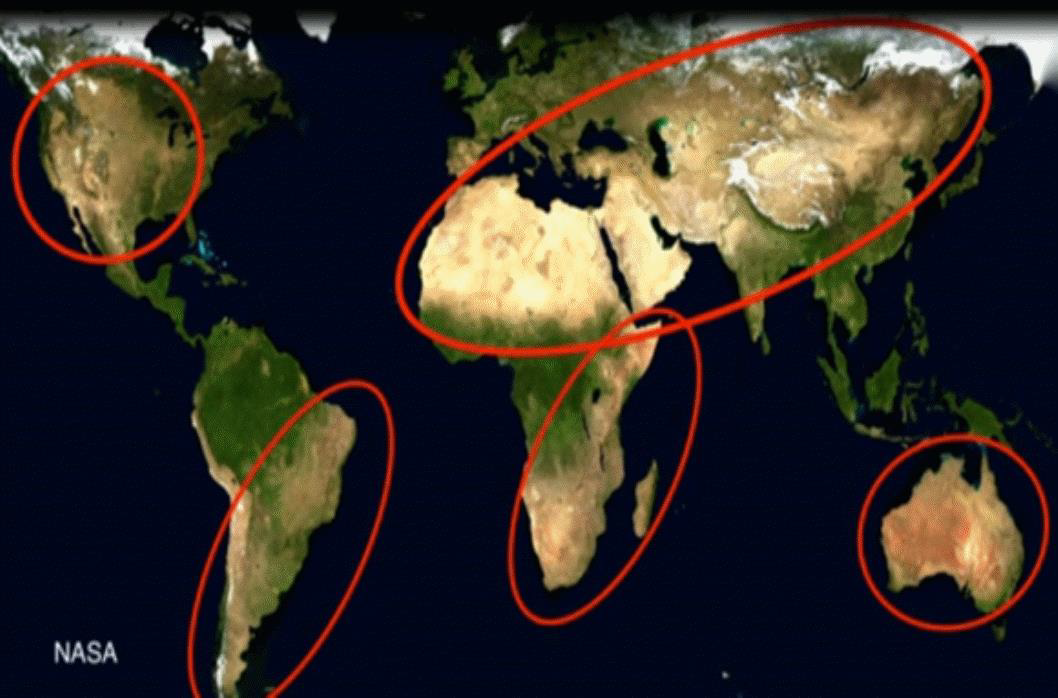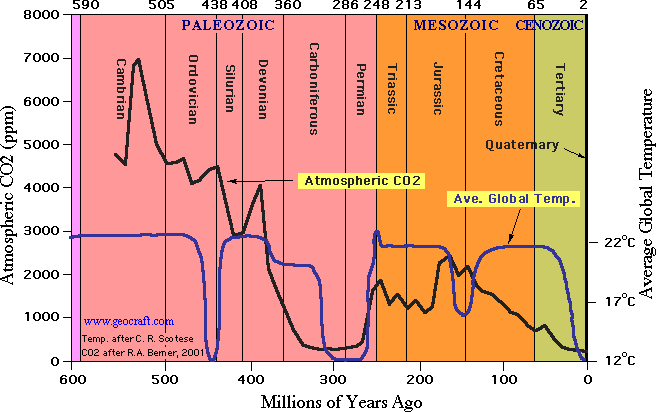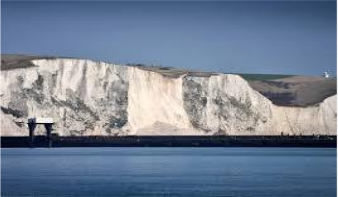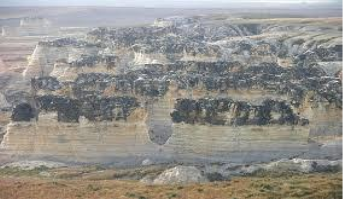A Watchman
Ezekiel 33 NLT “When I bring an army against a country, the people of that land choose a watchman. When the watchman sees the enemy coming, he blows the alarm to warn the people…They heard the warning but wouldn’t listen, so the responsibility is theirs…But if the watchman sees the enemy coming and doesn’t sound the alarm to warn the people, he is responsible for their deaths…I will hold the watchman accountable.”
“Every man’s island, Jean Louise, every man’s watchman, is his conscience.” Harper Lee, Go Set A Watchman
Because my conscience weighs heavy on me and because I do not want to be held accountable, listen to the following warning.
I am 74 years young. I was born into the business of livestock husbandry and have remained there. It was in discovering why a type of livestock management improved the soil so much and so quickly that I stumbled onto the cause of and the cure for global climate change. The main supportive material underpinning my conclusions and comments may be viewed on our website; www.grazingwisdom.com
Conclusions
1. Global change is real, global change has, is and will continue unless???
2. CO2 accumulation in the atmosphere IS NOT the cause and may be a good part of the solution.
3. The cause of global change is human interference of the water cycle.
This journey of discovery began quite by accident. I was studying and learning about the life in the soil. How this soil life is the basis for successful, healthy plant production and therefore livestock production. I was of the understanding that global change was occurring and the accumulation of CO2 in the atmosphere was the cause.
Then one hot dry July afternoon I used my wife’s cooking thermometer. I had read some information about soil temperature variation in relation to ground cover and decided to check it out. In good vegetative ground cover; think grass/prairies verses bare farmland, wheat stubble/fallowed ground the difference in temperature in the top 4 inches was 18 degrees Fahrenheit. I repeated this (highly scientific) measurement several times over the next few weeks, the results, were give or take 1 degree, the same. I looked closer under the ground cover; life was visible, bugs, worm castings, holes in the soil; dig a bit and you find the soil teaming with life. In the bare stubble ground, no signs of life. Why the difference? In researching the term “sensible heat” kept coming up. The best I can understand, this is heat that is sensed (sunburn) or has an effect on life; plant and/or animal. On the bare land, most of the sun’s energy is absorbed into and warms the earth. Very little is reflected. On the highly vegetative pasture, 85% of the suns energy (sensible heat) is used in either photosynthesis or, and this is important, in vaporizing the moisture produced by the plants. This moisture production is called transpiration. Plants, like people, sweat when they work hard. The vaporization of this transpiration (sweat) requires energy. This vaporization cools the plants and the earth much like we are cooled by the evaporation of our sweat. This vaporized moisture travels upward to the upper atmosphere where it is colder. The vapor condenses to liquid releasing the heat it had absorbed when vaporized. This liquid falls again as rain back over the area or close to the area it originated. This is nature’s air conditioner.
From the picture below, compliments of NASA, we can see that approximately 2/3 of the earths land mass is either desert or undergoing desertification (land turning into desert). Who or what caused this? We did! You, me, our forefathers and the other 6-7 billion of us.

The Two Primary Causes
The first cause has been occurring for 7-12 thousand years depending on location and that is the use of misguided and misunderstood agriculture techniques. (poor farming/ranching practices)
The second, more recent cause, is our building/development of population centers. Simply put, the construction of hard, non-porous, non-absorptive surfaces and the diversion of that water to rivers and oceans as soon as possible.
CO2
Not all carbon is part of something living, but all living things contain carbon. The earth’s temperature and levels of CO2 are plotted on the 600 million-year graph below. This time encompasses the major time of development (evolution) of mammals. The lowest level of CO2 of 180 ppm (parts per million) occurred approximately 300 million years past. Life as we know it today would have ended then if not for the white rot fungus that developed an enzyme to digest wood releasing the CO2. To understand the importance of this graph we must know the following, at 150 ppm of CO2 or less all plants die. The high side of 7,000 ppm would today be considered disastrous. But submariners experience extended CO2 levels of 8,000 ppm unaffected. OSHA says 4-5 thousand ppm in the workplace is safe. Green houses use increased levels of CO2 to stimulate plant growth. CO2 is the most potent, healthy plant growth stimulant available to mankind today. I am saying CO2 is a good thing, NOT a bad thing.

Check out the Percentages
Water vapor in the atmosphere over the world will vary from 1-3%. Today (5-27-17) the best information I can find the CO2 level is 410 ppm or .041%. I believe we need at least 1,200, ppm maybe much more. That would be .12% that is 12/100 of 1%. Where is all the CO2? As Peter, Paul & Mary sang, “Where have all the soldiers gone, . . .gone to grave yards everyone”. CO2 ‘s graveyard was and is the bottom of ancient and today’s ocean floors. Millions of years ago small animal life in the oceans developed the ability to combine calcium and CO2 forming limestone to make shells. The results of this process are obvious all over the world depicted in pictures below. The following is a direct quote from a speech to the Institution of Mechanical Engineers, London 14, London delivered 10/15/2015 by Patrick Moore, PHD: “The past 150 million years has seen a steady drawing down of CO2 from the atmosphere. There are many components to this, but what matters is the net effect a removal on average of 37,000 tons of carbon from the atmosphere every year for 150 million years. The amount of CO2 in the atmosphere was reduced by about 90% during this period. This means that volcanic emissions of CO2 have been outweighed by the loss of carbon to calcium carbonate sediments on a multi-million-year basis.”

White Cliffs of Dover

Badlands of Kansas

Ancient Ocean floor in Australia-compliments of Ray Archuleta
This same process is occurring today. We need CO2 as a carbon source for plants to grow and transpire, help repair the water cycle, sequester carbon in the soil to raise the soil organic matter and to reclaim deserts. The manufacturing of cement releases CO2 and besides cement we have a lot of other uses for the calcium. Instead of looking for ways to sequester CO2 we need to develop processes to release it from these sediments. At this point you can see why I feel like Pythagoras who first said the world was round, not flat. Conclusion from the graph of temperature and CO2 it appears to me we should be in an ice age. We are not. Why not? 85% of the sun’s energy falling on 2/3 of the land surface is being absorbed and warming the earth. The solution is plants growing, photosynthesis, transpiring, acting as the earth’s air conditioner and otherwise shading that 2/3 of the bare earth. The small increase of CO2 levels from 280 ppm pre-industrial to 410 ppm today is causing a greening of the deserts and I believe an increase in crop yields. We need three major changes: 1. Manage all water run-off from population centers. Impound, treat, recycle, enhance absorption and evaporation. 2. Change our agricultural practices to never have bare soil. Use cover crops, no-till and managed grazing. 3. Increase CO2 levels to stimulate plant growth. The sun will shine on the earth for another 3.5 billion years. Let us not waste it.
“There are two ways to be fooled. One is to believe what isn’t true, the other is to refuse to accept what is true”. Saren Kierkegaard
In my own meager way, I have sounded the alarm, the warning. As a watchman, I have done my duty. Whether you heed the warning or not is up to you. Robert L Kinkead, DVM, Retired
References
1. There is no constant exponential rising CO2-concentration since preindustrial times but a varying CO2-content of air following the climate. E.G. around 1940 there was a maximum of CO2 of at least 420 ppm, before 1875 there was also a maximum.
2. Historical air analysis by chemical means do not prove a preindustrial CO2-concentration of 285 ppm (IPCC),as modern climatology postulates. In contrast the average in the 19th century in northern hemisphere is 321 ppm and in the 20th century 338 ppm.
3. Todays CO2 value of. 380 ppm, which is considered as threatening has been known several times in the last 200 years, in the 20 th century around 1942 and before 1870 in the 19th century. The maximum CO2-concentration in the 20th century roses to over 420 pmm in 1942.
Study: Increase In CO2 Is Literally Making The Earth Greener By Andrew Follett 4/25/15 The Daily Caller
Mycorrhiza Fungi – Powerhouse of the Soil By Christine Jones Summer 2014
Nitrogen – The Double Edged Sword By Christine Jones 7/21/14
Save Our Soils By Christine Jones March 2015 ACRES Magazine
Liquid Carbon Pathway Unrecognized By Christine Jones July 2008 Australian Farm Journal
Carboniferous Climate By Monte Hieb 3/21/09
Should We Celebrate Carbon Dioxide By Patrick Moore 2015 Annual GWPF Lecture 10/15/15
Water for the Recovery of the Climate – A New Water Paradigm By M. Kravčík, J. Pokorný, J. Kohutiar, M. Kováč, E. Tóth 2007
Carbon is Not the Problem By George King 7/25/15 LinkedIn
Sahara Desert Greening Due to Climate Change? By James Owen 7/31/09 National Geographic News
Study Tracks ‘Memory’ of Soil Moisture By Aubrey Bemis-Winch 1/16/17 Morning AG Clips
Getting Back to Our Roots By Michael Amaranthus ACRES Magazine October 2013
Environmental effects of Increased Atmospheric Carbon dioxide By Arthur B. Robinson, Ph.D. Noah E. Robinson, Ph.D. Willie Soon, Ph.D. Journal of American Physicians and Surgeons 2007